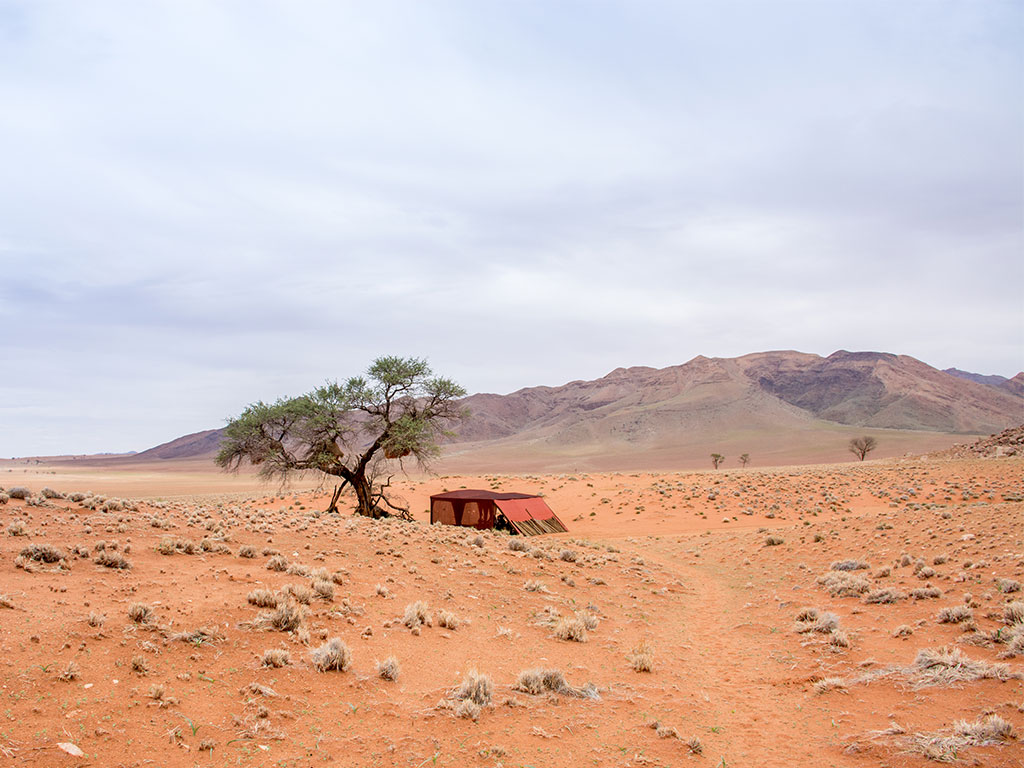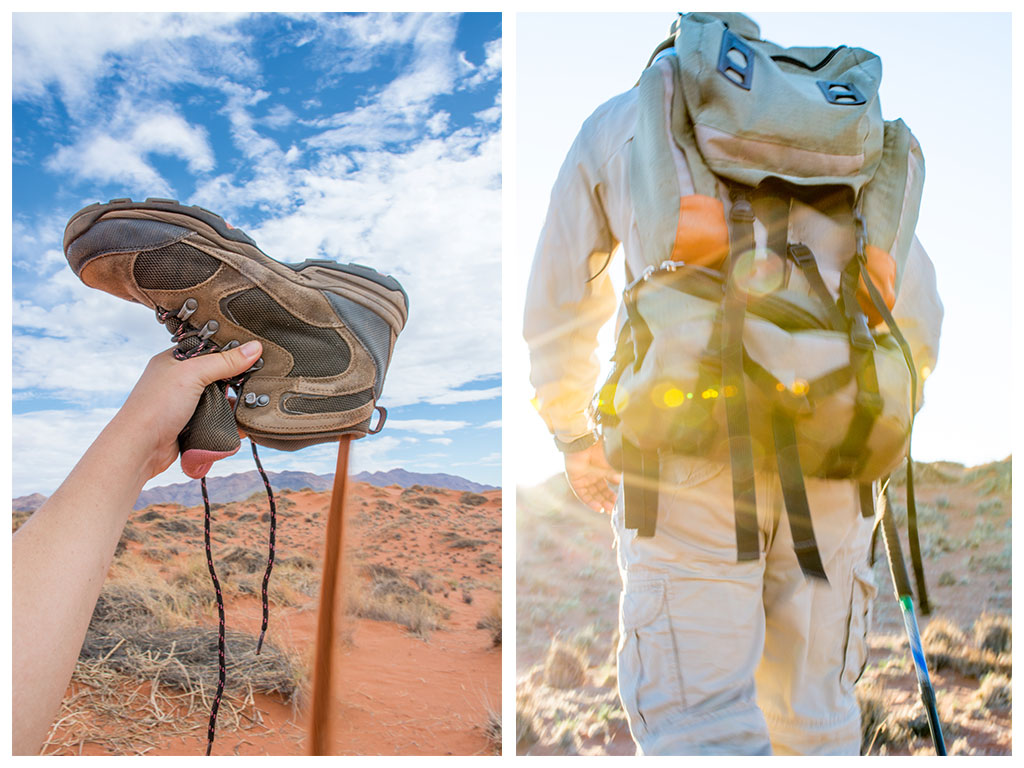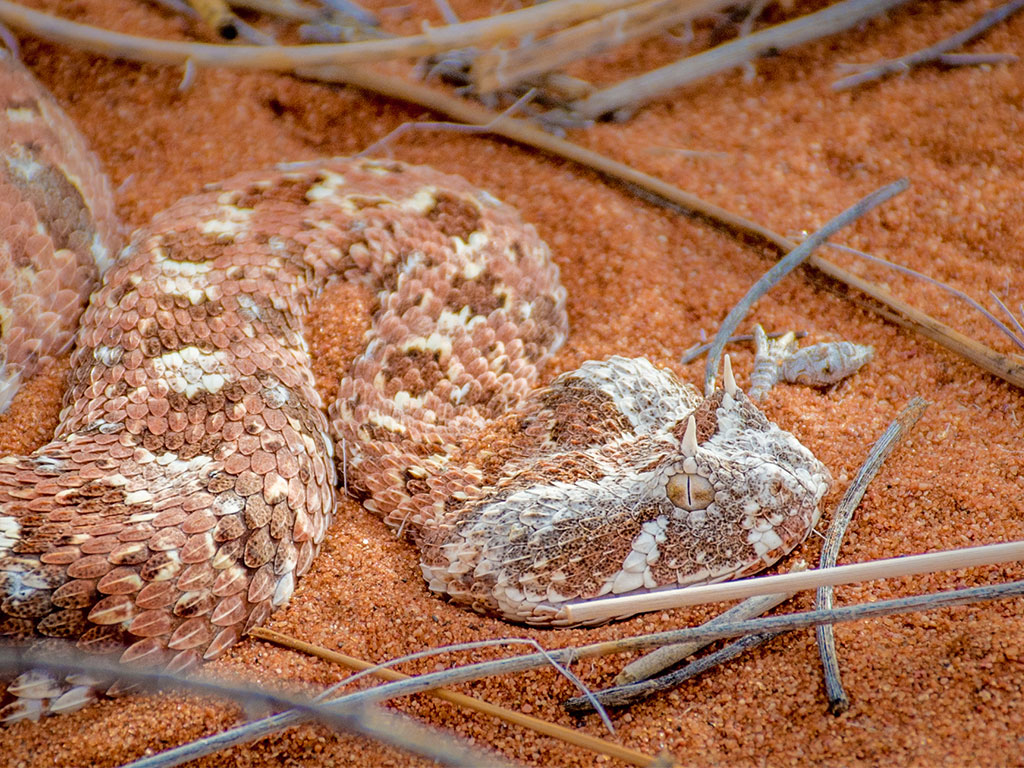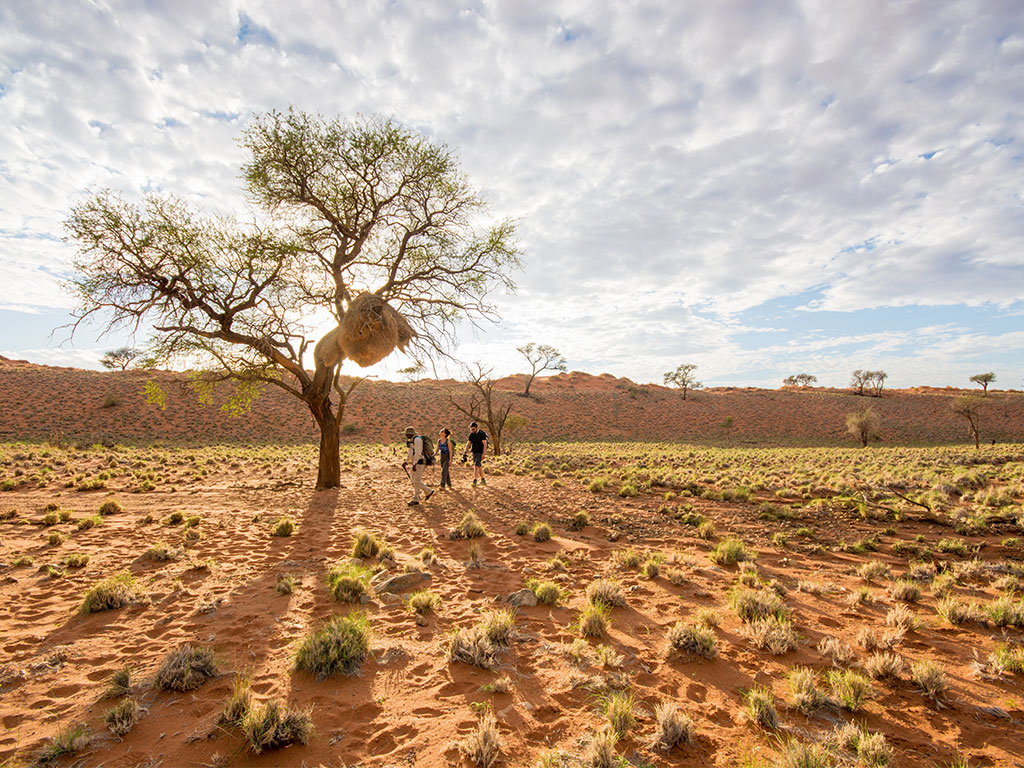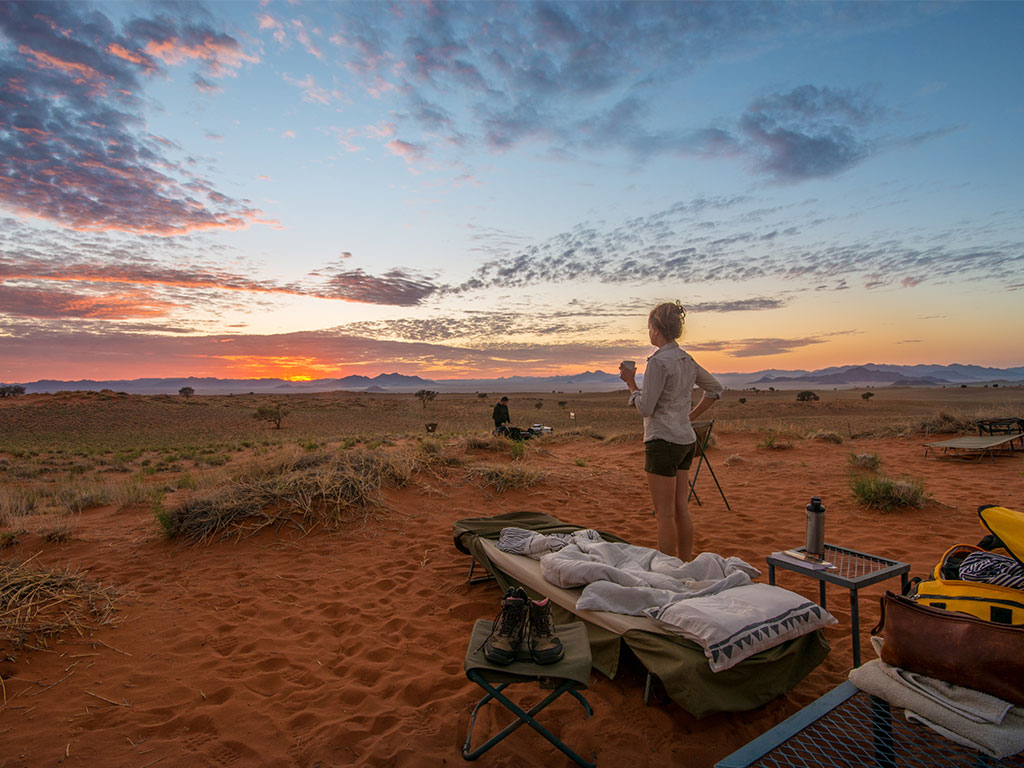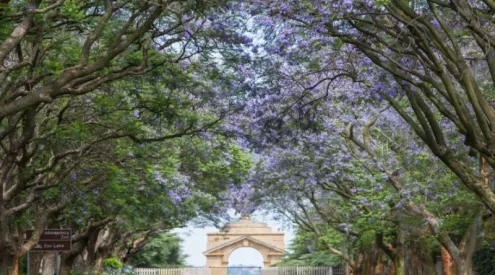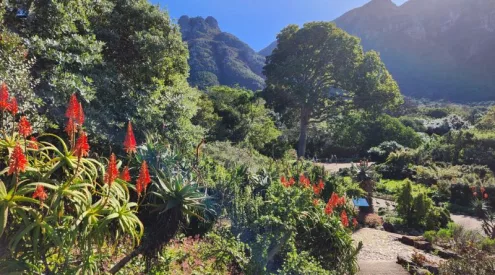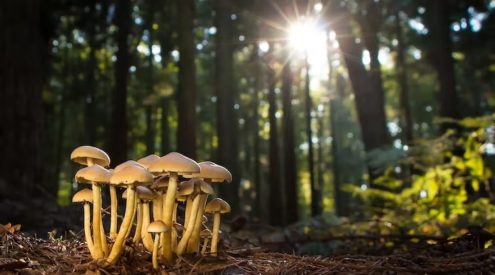The Tok Tokkie Trail is one of Namibia’s most wonderful and affordable walking safari experiences. Just you, wide sands, big skies and superb sundowners.
Richardo Tjiho points out what looks like, to me, lizard tracks. A sprawling, spiralling track that retires to a grass mound. Luckily, my ace desert guide knows better.
‘This is the track of the horned adder’, Richardo says. We must tread carefully.
There are just four of us walking through a special section of the Namib Desert. After a few steps, we spot the adder lying low beneath a shrub. It’s exquisite. The reptile’s colouring blends perfectly with the orange dune sand and the dried white desert grasses. The snake is surprisingly smaller than what I’d imagined from pictures I’d seen in books. Its eyes are sharp slits.
The Tok Tokkie Trail is a two-night slackpacking, desert-walking safari in the exquisite NamibRand Nature Reserve – one of the largest private reserves in Southern Africa at 215000 hectares. The reserve came about after 17 former livestock farms were rehabilitated into a single continuous natural habitat. The trail meanders through this captivating desert domain, which is exceptional in its variety – from ochre-orange dunes to crisp black mountain faces.
Seeing the adder is just one of the incredible highlights. We also learn about toktokkie beetles, whose white waxy shells help to protect them from the sun. We hear translucent barking geckos echoing into the sunset and see the delicately webbed burrows of dancing spiders. The desert is not deserted at all.
There’s also a very strong environmental aspect to this trail, which gives strength to the notion of ‘leave no trace’ and low-impact ecotourism. The trail begins with a visit to the Namib Desert Environmental Education Trust (NaDEET), a non-profit, donor-sponsored organisation that aims to encourage the citizens of Namibia to be environmentally responsible.
In essence, it’s a school camp that teaches students how to preserve natural resources and use them sustainably. The camp makes use of very little water (for example, the basins have no taps – only cups, which you need to fill from a central tank of water, which is then used for brushing teeth or washing hands). This is also where we can clearly witness the responsible lighting policies that give NamibRand its International Dark Sky Reserve status. All lights in the reserve have a cover in order to direct the light downwards and prevent excess light pollution. And, boy, the night skies here are worth preserving.
The trail is not difficult, but it can be challenging and requires some fitness. The first few steps I take are hot, despite the trail only beginning at 14:00. My skin stings in the sun and the dune sand is hot and loose, making it more of a chore to stroll over.
Richardo leads us to our first camp. The walk is relatively short, less than two hours, but we pant and puff in the hot afternoon. I say ‘we’ but this excludes Richardo. The trail takes a maximum of eight guests and in peak season he walks these trails back to back with few rest days.
We can just spot our camp from afar. The structures are subtle and merge into the desert surrounds. With glee we find cold beers and cool drinks on arrival at the ‘Ostrich Bar’. There are also G&Ts, which I make a beeline for.
Once refreshed, we’re shown our desert suites. There’s a basin with an inventive tap (a tin with holes cut into it, so it sprays evenly with just enough pressure to wash your hands), a stretcher and canvas bedroll and metal benches serving as luggage racks. Solar lights and a small stool complete the setup – the stool is to place your shoes on, to prevent them becoming hermit shells for any nocturnal desert critters.
Dinner is a surprising three-course feast and I can’t believe such culinary prowess exists out here in the desert. We start with a vegetable stack, followed by oryx roulade and cinnamon squash, and end with a caramel-crunch tart. Our Nama chef, Belinda Burtze, describes each plate in her mother tongue (as well as in English), so we can appreciate all the desert sounds. Fed and watered, we turn our gaze to the sky. It’s hard not to feel entirely engulfed by the diamond-studded dome above. Sleeping outside on a stretcher with the heavens as my ceiling is the perfect end to an extraordinary day.
On day two I wake to a neon sky and coffee served to me in bed. Mercifully, there’s a bit of cloud cover and it’s a cool morning. Winds in the night have wiped the slate clean and the early light is perfect for spotting the tracks of creatures that crawled about at dawn. This is how we saw the horned adder tracks.
After the exciting sighting and with our adrenaline spiked, we start the steady climb up Horseshoe Mountain, resting at the top and soaking up the views. What I love most about the trail is that you get to feel the different aspects of the Namib. From up here, it’s easy to see the purple hills of the luxurious Wolwedans Dune Lodge and to the right the low, sloping red dunes that lead the way to Sossusvlei, steadily growing in stature.
Below us, stones are strewn across the landscape and the vast plains are planted with ‘fairy circles’. No one knows why these circles exist. Why does nothing grow in the centre of these grass patches? Scientists blame gas bubbles, termites and more. Richardo tells us how ground from the centre of the circles has been dug up for growing plants elsewhere – and it spawned growth. But nothing planted into the actual circle ever survives.
Studies continue, but I love that there is still some mystery left in Namibia. Some stories belong only to the sand.
Plan your trip to the Namib
Getting there
Tok Tokkie Trails is about 110km south of Sesriem (near the Sossuvlei dunes) and about 500km, or a six-hour drive, from Windhoek. I travelled to Namibia from Johannesburg via Upington as a two-day trip. The easiest route is on the N14 through Ventersdorp, Vryburg and Kuruman, and the first day takes about eight hours. From Upington, take the N10 to the Ariamsvlei border post. In Namibia take the B3 to Grunau. At the border you will need to pay a R260 road-usage fee. Keep this receipt in a safe place, as you will be asked to present it at any roadblocks.
The Tok Tokkie Trail
The three-day, two-night Tok Tokkie Trail is a real outdoor experience – you sleep under the stars on stretcher beds in a bedroll (tents are provided in unfavourable weather). Bathroom facilities comprise a long-drop toilet, hand basin and bucket shower. Drinking water is available at the lunch spot and overnight camps. You need to arrive by 14:00 (13:00 if you have booked lunch) for the start of the trail. Your main luggage will be transported by a backup vehicle to the overnight camps).
The SADC rate for the trail is R3490 per person, with a maximum of eight people per group. toktokkietrails.com
What’s included
The rate includes all meals, the services of a guide and backup crew, and a transfer to the starting point. Tea, coffee, juice, beer, wine and soft drinks are available at the overnight camps, and included in the rate.
When to go
Trails run from 15 February to 30 November. Richardo says the best time to do the trail is in June or July; August can get windy.
Need to know
The Namib is a surprisingly cool desert because coastal breezes keep temperatures down. Pack warm clothes for the evenings and mornings. Use a very small daypack with a hip belt for the walk. Take a camera, ample sun protection and water. A bladder or simple, lightweight hydration pack might also be useful. Check on the phase of the moon before you book your dates – the trail is a real treat at new moon when the stars and dark skies are at their best.
Stay here
NamibRand Family Hideout on the reserve has a self-catering farmhouse (sleeps 10) and two campsites (sleep eight each). The house costs from R1000 for four people (bedding is R100 per person extra), the campsite is R150 per person. Park fees R90 per person per night and a minimum two-night stay is required.
Sesriem Campsite is basic but very affordable. Plus you get to visit the Sossusvlei dunes earlier than other visitors as the camp is inside the Namib-Naukluft National Park. R220 per person.









